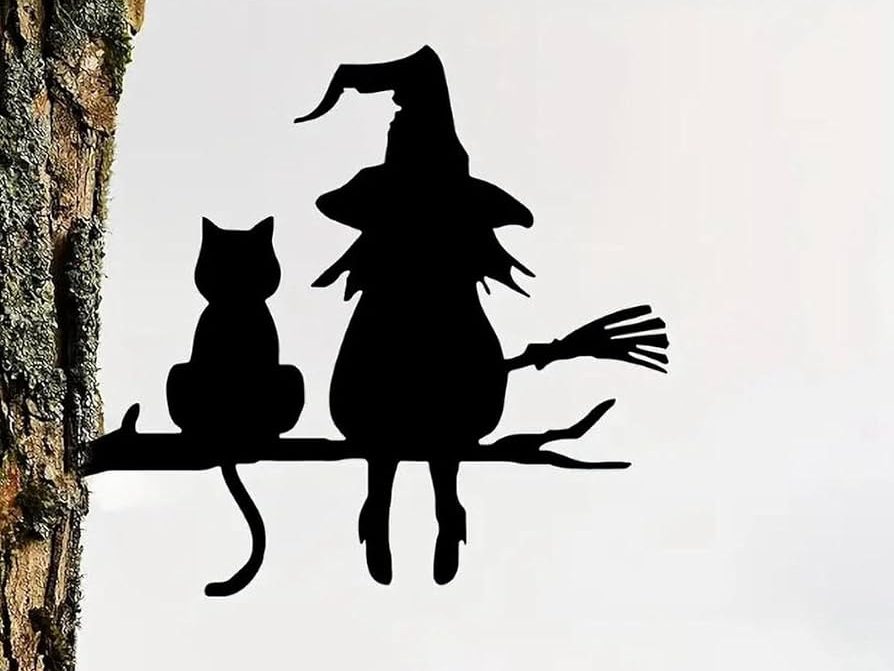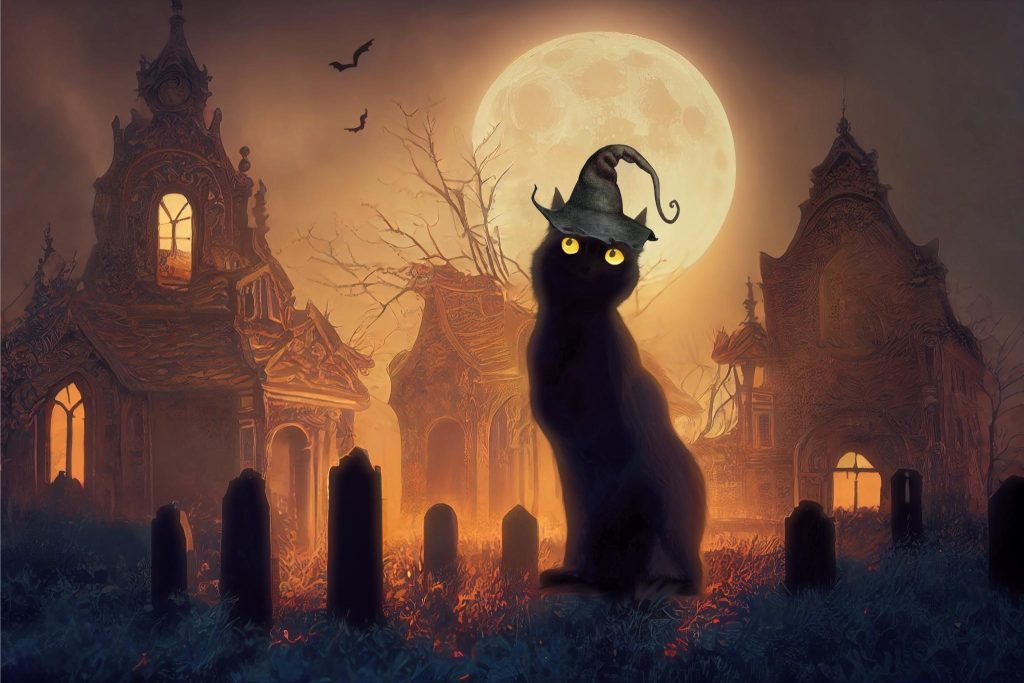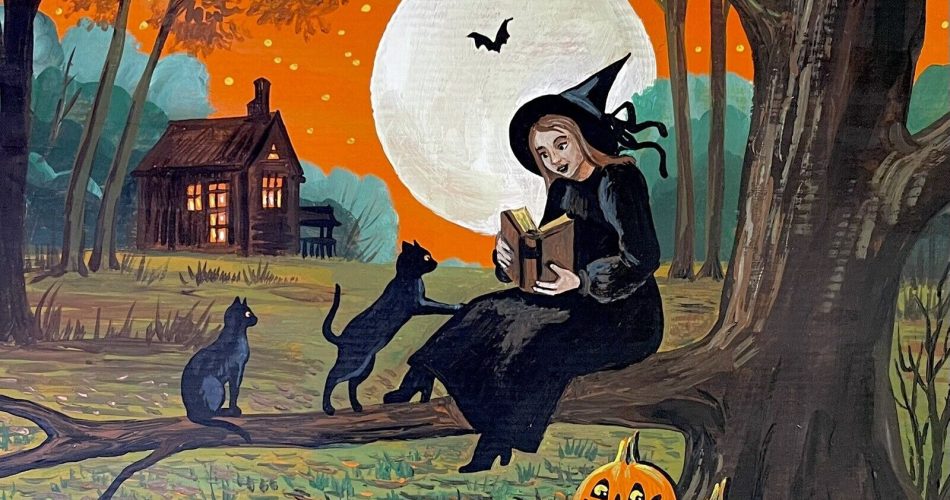Throughout history, cats have been closely associated with mysticism, magic, and the occult. The connection between witches and cats is particularly strong, with the feline creatures often depicted as companions or familiars of witches in folklore, literature, and art. But why have cats gained this notorious reputation, and what does it mean for our understanding of witches and their supernatural powers? To unravel this mystery, we must explore the historical, cultural, and symbolic relationship between witches and their feline companions.
The Origins of the Witch’s Familiar
A familiar is typically defined as a supernatural creature or spirit that serves and aids a witch, often in magical rituals or as a companion in spiritual practices. Familiars were believed to help witches carry out their magic, act as intermediaries between the witch and otherworldly forces, or even serve as protective guardians. In European folklore, the idea of witches having animal familiars gained traction during the Middle Ages and the Renaissance period, especially in regions where witch hunts were most common.
The role of the familiar has roots in ancient cultures and pagan practices. In the Celtic, Norse, and Egyptian traditions, animals were often revered for their mystical qualities and were thought to possess the ability to communicate with spirits or deities. Cats, in particular, held special significance. The Egyptians, for example, viewed cats as sacred creatures, associating them with the goddess Bastet, who symbolized fertility, home, and protection. Bastet was often depicted as a lioness or a woman with the head of a lion, underscoring the mystical connection between cats and spiritual power.
As Christianity spread across Europe and replaced older pagan beliefs, the perception of animals like cats began to shift. Christianity often viewed pagan symbols as evil or heretical, and this transformation was reflected in the way cats were seen. In the medieval period, cats were associated with witchcraft and devilry, largely due to their nocturnal habits, mysterious demeanor, and independence. Their ability to move silently in the dark, combined with their sharp eyes and hunting prowess, made them seem otherworldly and linked to the supernatural.

Cats as Witch’s Familiars
The most well-known animals associated with witches are cats, especially black cats. The color black was often connected to death, darkness, and the unknown, making black cats the perfect companions for witches who were thought to wield dark powers. In many parts of Europe during the witch hunts, black cats were believed to be witches in disguise or the witch’s loyal familiar. Witches were thought to have the ability to shape-shift into animals, and cats, with their elusive and mysterious nature, were frequently chosen as the form a witch would take when performing her magic.
During the witch hunts of the 16th and 17th centuries, the belief in witches’ familiars reached its peak. Witches were believed to sign a pact with the devil, and their familiars were thought to be demonic creatures that aided them in their work. This belief led to widespread fear and suspicion of cats, particularly black ones. People believed that witches could control these animals to do their bidding, whether through magic or with the assistance of demonic forces.
In some cases, witches’ familiars were said to be invisible, and only those with the “second sight” could perceive them. This supernatural ability was often attributed to witches, who were believed to possess the power to see things beyond the physical world. Familiars, therefore, were often thought to be spirits or entities that only appeared to those initiated into witchcraft.
The relationship between witches and cats is also reinforced in folklore and stories. In the famous witch trial of the 16th century, for example, some women accused of witchcraft were said to have kept black cats as companions. These cats were often described as loyal and watchful, serving as the witch’s constant ally and confidant. One particularly notable legend comes from the infamous Salem witch trials in 1692, where cats were believed to be witches’ familiars, assisting them in their dark rituals.
Cultural Significance of Cats in Witchcraft

The symbolism of cats in witchcraft goes beyond just their role as familiars. Cats have long been considered symbols of independence, mystery, and intelligence—traits that resonate deeply within the witchcraft tradition. Witches, like cats, were often portrayed as independent women, free from the constraints of society. Cats’ ability to remain aloof and self-sufficient mirrored the image of the witch as an outsider, someone who operated outside the boundaries of conventional norms.
Cats’ behavior also aligns with the qualities that were ascribed to witches. Their keen senses, agility, and ability to slip in and out of spaces without being noticed made them seem like masters of stealth, much like witches who were believed to be able to move between worlds, invisible to the untrained eye. Moreover, cats’ nocturnal nature added an element of mystery and fear. Witches, too, were often thought to perform their magical rites under the cover of night, further linking the two in popular imagination.
In many cultures, cats are still considered protectors against evil spirits. In witchcraft, cats are believed to guard their owners from negative energies or demonic forces. This protective aspect of cats further cements their association with witches, who are often depicted as defenders against dark forces. Some modern-day witches even keep cats as companions in the belief that they serve as spiritual guardians, protecting their homes and their magical practices.
Modern Perspectives on Cats and Witches
Today, the historical connection between witches and cats remains strong, especially in popular culture. The image of the witch with her black cat is an iconic symbol in literature, film, and television. From the mischievous feline companion of Sabrina the Teenage Witch to the mysterious black cat in Disney’s Hocus Pocus, cats continue to be seen as witches’ trusted allies.
In contemporary witchcraft and neopagan practices, the connection between witches and cats has evolved. Many modern witches view their cats as beloved companions rather than supernatural entities. Cats, with their independent nature and spiritual energy, are still considered powerful symbols of magic, mystery, and protection. In this context, the cat’s role as a witch’s familiar is more symbolic, representing the witch’s inner strength and connection to the mystical world.
FAQs
1. Why are black cats associated with witches?
Black cats have long been associated with witches due to their mysterious and nocturnal nature. In medieval Europe, black was linked with death, darkness, and the unknown, which made black cats the perfect companions for witches. They were often believed to be witches in disguise or the witch’s familiar, aiding in magical practices.
2. What is a witch’s familiar?
A witch’s familiar is a supernatural creature or spirit that serves and assists the witch in performing magical rituals. Familiars were believed to help witches communicate with otherworldly forces, protect them, or aid in casting spells.
3. Were cats really witches’ familiars?
While there is no concrete evidence that cats were truly witches’ familiars, historical beliefs during the witch hunts and in folklore suggested that witches had animal companions, including cats. These cats were thought to help witches with their magical practices and serve as agents of evil or supernatural forces.

4. Do modern witches still keep cats as familiars?
Today, many witches see their cats as companions and spiritual protectors rather than actual magical entities. Cats are still valued in modern witchcraft for their mystical energy and connection to the natural world, but the concept of familiars has become more symbolic than literal.
5. Why are cats considered mystical?
Cats are often considered mystical due to their independent and enigmatic nature. Their ability to move silently, their sharp senses, and their nocturnal habits contribute to their association with magic, the supernatural, and the occult in various cultures.
